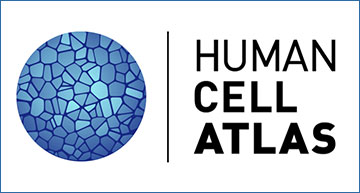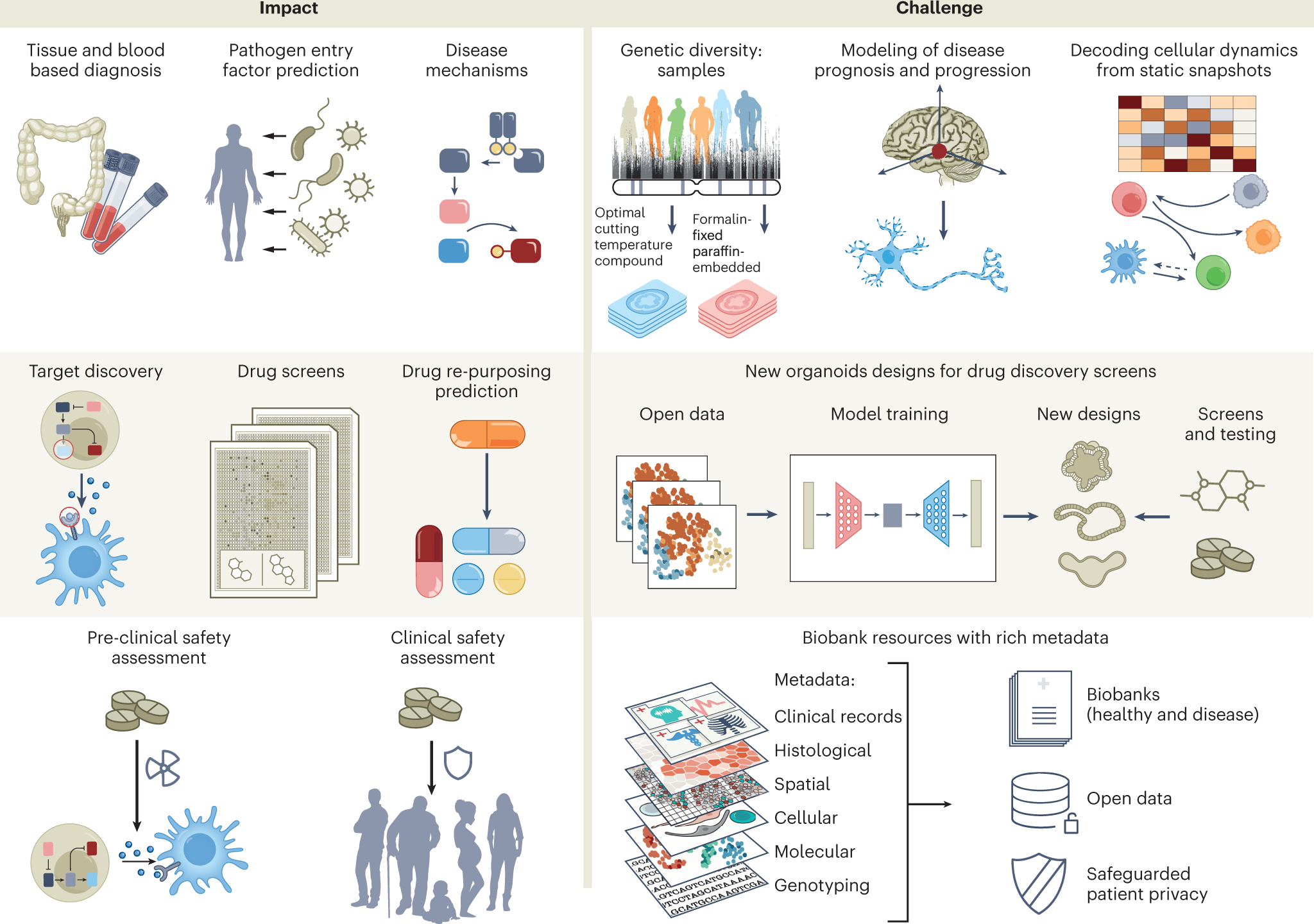Single-cell atlases promise to provide a ‘missing link’ between genes, diseases and therapies. By identifying the specific cell types, states, programs and contexts where disease-implicated genes act, we will understand the mechanisms of disease at the cellular and tissue levels and can use this understanding to develop powerful disease diagnostics; identify promising new drug targets; predict their efficacy, toxicity and resistance mechanisms; and empower new kinds of therapies, from cancer therapies to regenerative medicine. Here, researchers from Genentech and the Wellcome Sanger Institute lay out a vision for the potential of cell atlases to impact the future of medicine, and describe how advances over the past decade have begun to realize this potential in common complex diseases, infectious diseases (including COVID-19), rare diseases and cancer.
Potential medical impacts of the Human Cell Atlas and remaining challenges
Left, important insights that have been drawn from cell atlases on disease mechanisms, diagnosis and treatment. Right, key remaining technical and fundamental barriers for medical impact, including diversity, data availability and understanding disease progression.
Availability – https://www.humancellatlas.org/
Rood JE, Maartens A, Hupalowska A, Teichmann SA, Regev A. (2022) Impact of the Human Cell Atlas on medicine. Nat Med [Epub ahead of print]. [article]





